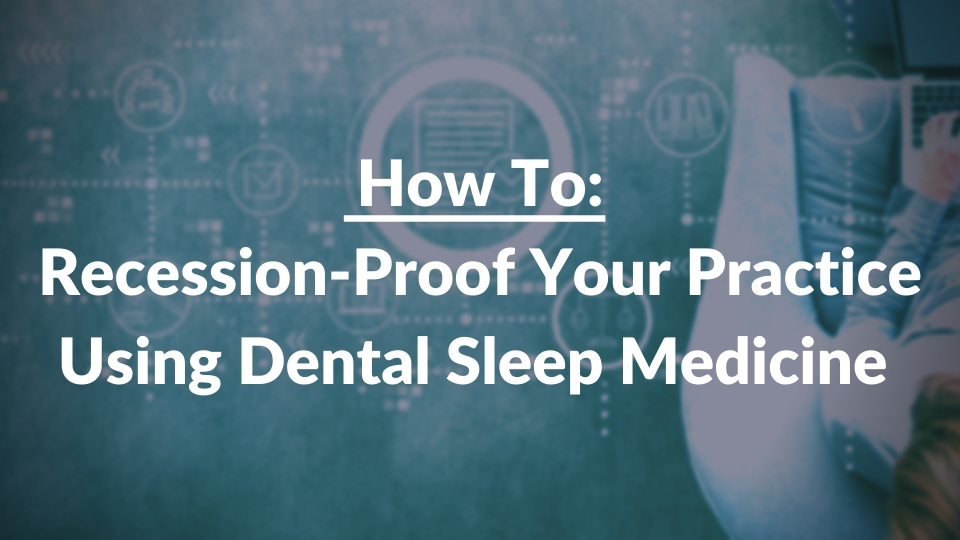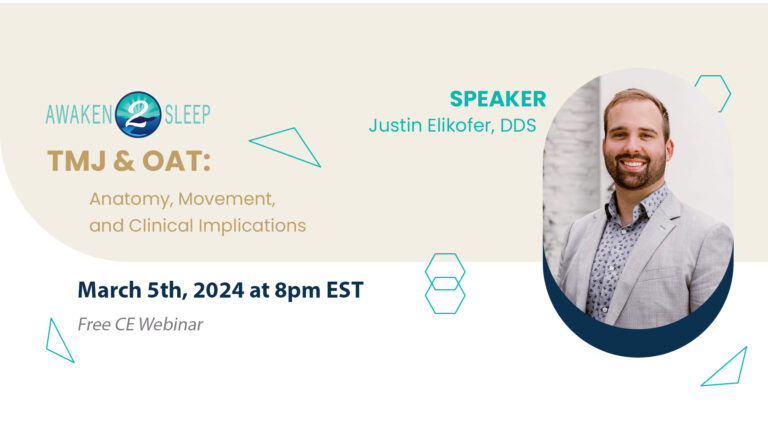By: Chad Wooters
It was the end of the course when one of the doctors on our 2-Day event spoke up about one of her takeaways from the content and she shared these words:
Helping patients with this condition and bringing this service into my practice is how I’m going to recession-proof my practice!
Dr. Sabine Purps
It was this comment that inspired this article, to share some of the reasons that being a dental sleep medicine practitioner can not only have a lasting impact in your patient’s lives but make a difference in your dental business, no matter where you are!
Overview
How Do You Make Money in Dental Sleep Medicine?
Once you have started in dental sleep medicine it’s important to have a properly structured fee and system for treatment planning. If you are wondering how to get started check out this article.
Let’s investigate setting a fee and look at some of the factors that impact our bottom line.
What is the Cost of Treating Sleep Apnea?
When it comes to treating sleep apnea, what is the cost of providing this treatment?
Some costs include:
- Lab Fee for the Oral Appliance
- Room Turnover
- Doctor Time
- Team Time
- 3rd Party Financing
- Impression Material
- Home Sleep Testing and Diagnostic Services
There are a number of ways to factor these costs into your treatment plan but if we consider the larger cost and create a rough estimate for our example then you can work to find your true cost.
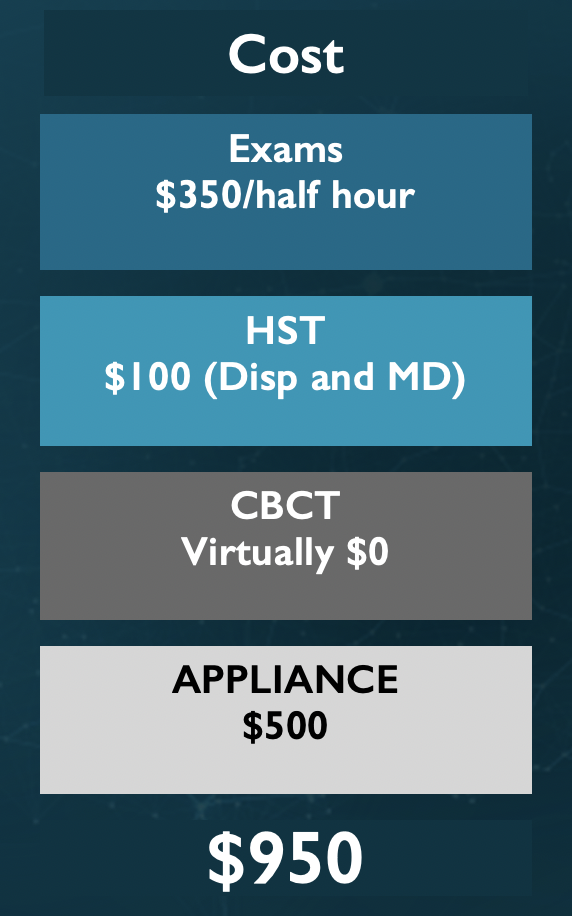
There are a few other costs and these costs may vary depending on where you are, your workflow, and your technology. Let’s consider a high cost for offering this treatment to be $1100 before financing.
Please take some time to consider what your cost is for your own numbers!
How Much Do You Charge for Oral Appliance Therapy?
There are various trains of thought on how you should treat patients with obstructive sleep apnea. For this example, we are going to assume you have a single fee for what we call a “Comprehensive Treatment Plan.”
The Comprehensive Treatment Plan:
We coach our clients to use one fee to keep things simple for their patients. All parts of the process are included in this fee, regardless of any extra work or steps that are required. This keeps things simple for your team and your patients. In the word of Donald Miller:

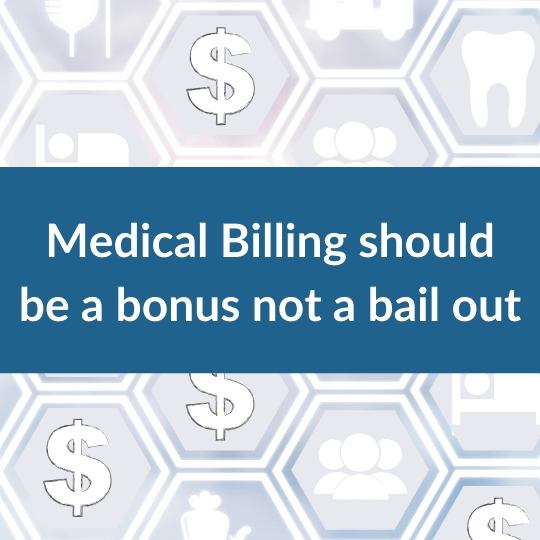
National Averages of Fees for Oral Appliance Therapy
In this conversation, we are primarily discussing a fee for service model. Medical billing is an amazing tool when offering this treatment to patients but invites a significant amount of complexity to a practice just starting off.
National averages for a fee-for-service model are $2850 – $4500 for a comprehensive treatment plan.
Some of the factors that should influence your fee are:
- Standard Net Production from Treatment
- Location
- Demographics
- Materials and Workflow
For our example, we are going to use $3500 as a low/middle ground for those fees.
This fee is not intended as a recommendation for you to set your fees and is only intended to provide an example for further exploration of the topic.
What is the Potential in Your Practice?
As mentioned above we have the opportunity to work with clients nationally. One of the services that we provide is advanced tracking for their teams to evaluate the total patients seen, screened, diagnosed, treated, and more.
The following numbers are based on actual client data gathered over the course of two years.
Let’s assume we are working with a single doctor practice with 2 hygienists who sees 8 patients per day. We know that many of you are seeing more and have significantly more patients, so please modify the math accordingly!
NOTE: This evaluation is provided as an example and not a guarantee of results.
We have seen in our advanced tracking that the average dental practice identifies 38.7% of patients as at risk for an airway concern.* This means that roughly 70 patients are considered at risk for an airway concern.
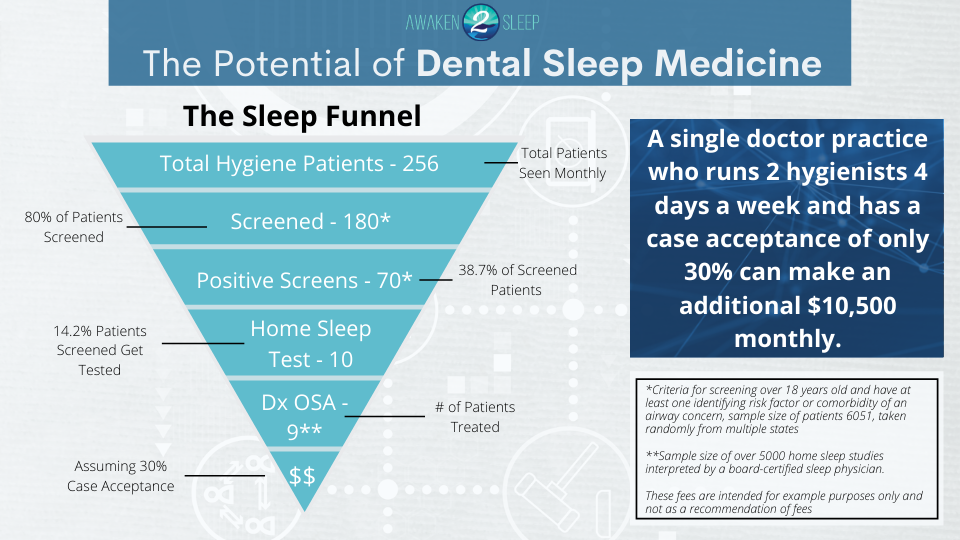
70 patients are considered at risk and need a test!*
Of those screened as at risk, we will assume an office can help 10 of those patients with a home sleep test. This means that the case acceptance for a home sleep test is less than 14.2%!
This means that 9 patients will likely receive a diagnosis of a sleep disorder.**
Of those tested for an airway disorder, Awaken2Sleep has seen over 90% of patients tested for a sleep disorder are diagnosed as having Obstructive Sleep Apnea.**
*Criteria for screening over 18 years old and have at least one identifying risk factor or comorbidity of an airway concern, sample size of patients 6051, taken randomly from multiple states.
**Sample size of over 5000 home sleep studies interpreted by a board-certified sleep physician.
If a practice has a case acceptance rate of 30% and is using the fee mentioned above ($3500 for our example) then that practice stands to make $10,500 (gross) as a single doctor practice.

Would $10,500 a month make a difference to your dental practice?
Tip: Do you think your office could perform at a slightly higher level than marginally below average?
What Does Your Practice Really Make for a Single Case?
Assuming an average cost of $1100 for the case, $600 for 24-month financing through a lender like Care Credit, and a treatment planning fee of $3500 the practice will net $1800 per case.
Helping only 3 people a month, you would bring in $5400 Net production monthly, $64,800 a year.
Take a look at the image below to look at additional revenue generating components of a sleep program in addition to our example appliance fee!
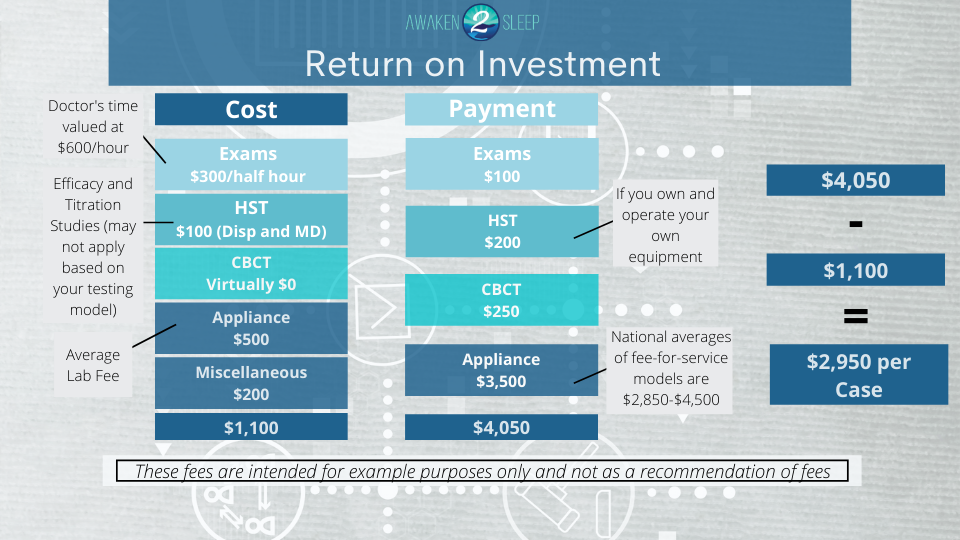
This is not a guarantee of results for implementing dental sleep medicine.
Is your practice larger? Scale the math.
Does your practice have higher costs? Increase the fee.
Remember our numbers are all well below average. This is intentional to show that even in practices that are just starting out and/ or struggling to get their sleep program going, it only takes a few cases to make a financial impact on the practice.
Our clients frequently perform at much higher levels than in this example.
Conclusion
It makes sense as to why Dr. Purps said this can help her “recession-proof” her practice. This represents Phase 1, where she screens her existing patient base to help save their lives and get paid appropriately.
Future referral sources include word of mouth referrals, medical billing, external marketing, and working with the physician community.
What could you do with an extra $10,500 a month?

